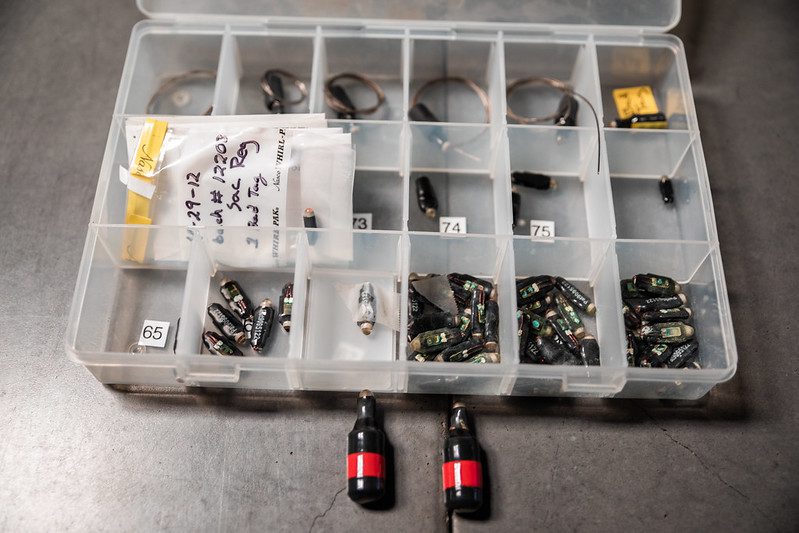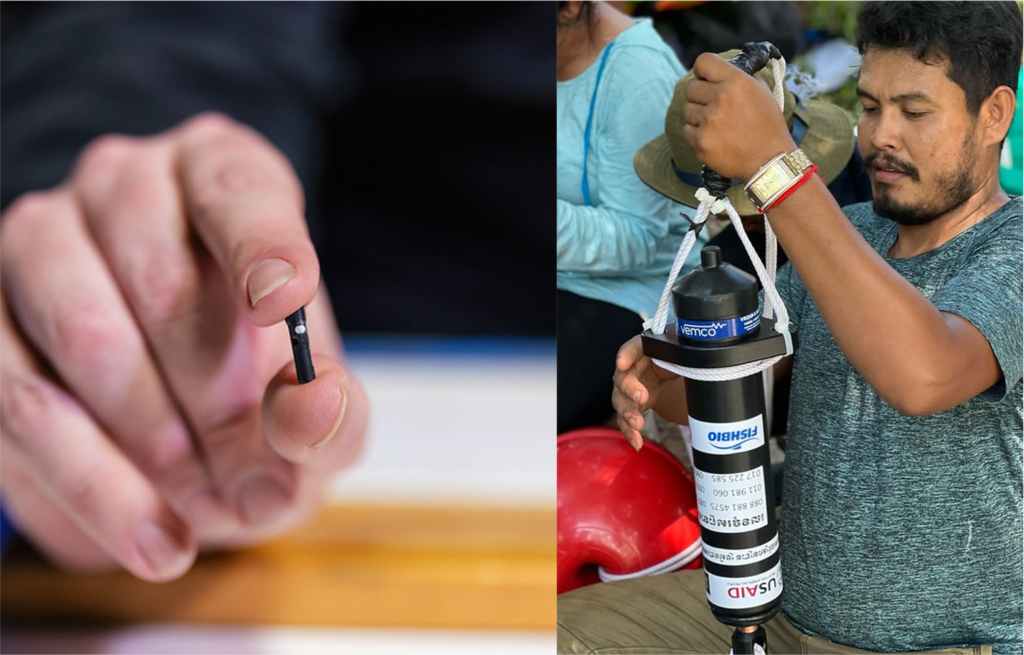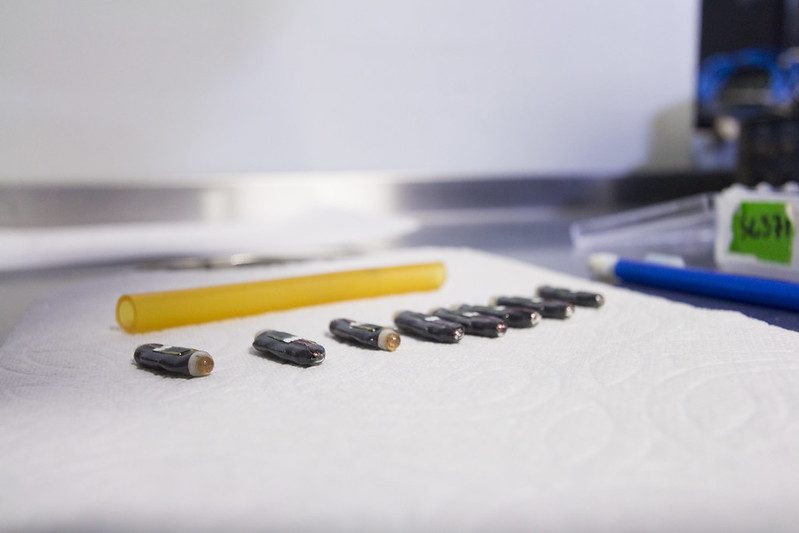Monday March 27, 2023
Scientists have been tracking and monitoring animals for research since the late 19th and early 20th centuries, primarily by tagging and banding fish and birds with small metal bands. These tags, equipped with unique codes, allowed scientists to identify individuals when they were recaptured. This process aptly referred to as “Mark and Recapture,” provided data that could then potentially be used to estimate population size, migration patterns, behavior, habitat use, and more. While resighting marked birds only requires a pair of binoculars and some patience, recapturing marked fish can be very challenging. As a result, data from these early efforts were often limited and left scientists with many unanswered questions. However, in the late 1940s and early 1950s, significant electronic advances made it possible for scientists to track animal movements wirelessly and without needing to rely on the physical re-capture of tagged individuals. In 1947, Bell Laboratories invented a transistor that was faster, stronger, and most importantly much smaller than its predecessor, allowing scientists to create tiny transmitters that could be fastened to an animal and transmit signals to a receiver wirelessly. This wireless technology became known as biotelemetry, which is defined as an “instrumental technique for gaining and transmitting information from a living organism and its environment to a remote observer.”
Biotelemetry relies on two types of transmissions, either acoustic or radio, to wirelessly communicate between a transmitter attached to an animal and a receiver. Both transmission types have advantages and disadvantages, and scientists use their knowledge of the animal and its environment to determine which type of tag to use. Acoustic telemetry uses sonar to detect objects or animals, an approach that was originally developed to detect submarines during World War I. Acoustic telemetry is best suited for aquatic environments that have low turbulence and higher conductivity, such as estuaries and coastal habitats. Radio telemetry, on the other hand, relies on wireless radio communication. As part of the electromagnetic spectrum, radio waves easily move through the air, and quickly became mainstream in land-based communication. However, radio telemetry can also be used in aquatic environments, and even performs better than acoustic telemetry in highly turbulent waters. Although radio waves can easily get distorted in salt water, the method can still be used in freshwater environments with low conductivity.

Acoustic telemetry was the first biotelemetry method utilized in fisheries research. In 1956, the U.S. Bureau of Commercial Fisheries (now known as the National Marine Fisheries Service) and the Minneapolis-Honeywell Regulator Corporation used acoustic telemetry to monitor adult Pacific salmon (Oncorhynchus species) passage at the Bonneville Dam in Oregon. At that time, acoustic transmitter tags could only be used on adult fish because the tags were large and had to be attached externally to the muscle beneath the dorsal fin. However, in 1958, Texas Instruments invented the integrated circuit, allowing for much smaller tags with better detection range and three times the battery life of previous designs. These tags could also be implanted surgically into the body cavity of fish, which greatly reduced tag loss. In California, early applications of acoustic telemetry in the 1960s were used to track Chinook salmon movements in the Sacramento-San Joaquin Delta.

In the early years of biotelemetry, researchers typically had to design their own transmitters, sometimes even including circuit diagrams in scientific reports for reference. This was often a tedious and costly process, and limited telemetry studies to a handful of locations and institutions. As telemetry technology became commercialized, equipment became more accessible to a wider range of researchers. The same technology used in the first cell phones and personal computers helped to make receivers and transmitters more readily available to the scientific community. Receivers could be produced faster, and smaller transmitters were developed so that smaller species and juvenile life stages of fish like salmon could be studied.

Major strides have been made in biotelemetry since its first implementation, and the technology continues to become more sophisticated. Specialized sensors have been added to acoustic tags to record environmental data (e.g., temperature, ambient light, depth) and physiological data (e.g., body temperature, heart rate, respiration). In fish, movement or “tilt sensors” can also be added to tags to monitor mortality and activity. Newly developed Predation Detection Acoustic Tags (PDAT) can even record when a fish has been eaten by a predator, as they are designed to send out an altered signal when the stomach enzymes of the predator break down a fuse in the tag. Telemetry provides vital information on species movement and activity in the fisheries field, and is especially useful for monitoring rare species. For example, in June 2022, FISHBIO scientists acoustically tagged the world’s largest freshwater fish – a giant freshwater stingray captured in Cambodia – and this tagged individual has been providing the first empirical data on the movement behavior of this endangered species.

In 1978, in an effort to collect and share data worldwide, a global animal tracking and environmental monitoring network known as the Advanced Research and Global Observation Satellite (ARGOS) system was established, and it has since led to groundbreaking discoveries in the field. For instance, a study published in October 2022 used satellite tags and the ARGOS system to describe the first evidence of critically endangered European eels (Anguilla anguilla) completing their spawning migration to the Sargasso Sea near Bermuda. Though the route the eels take on their migration had long been hypothesized, it was only with recent advances in acoustic technology that scientists were able to monitor their entire migration. The future is certainly bright for the applications of biotelemetry in the fisheries field, and as technology continues to evolve, it is likely that other previously undocumented fish behaviors will be revealed.
This Fish Report is the second of the Fishing Through The Ages series. To read more about the history of fisheries science, check out our Fish Report category focused on history.
This post was featured in our weekly e-newsletter, the Fish Report. You can subscribe to the Fish Report here.
